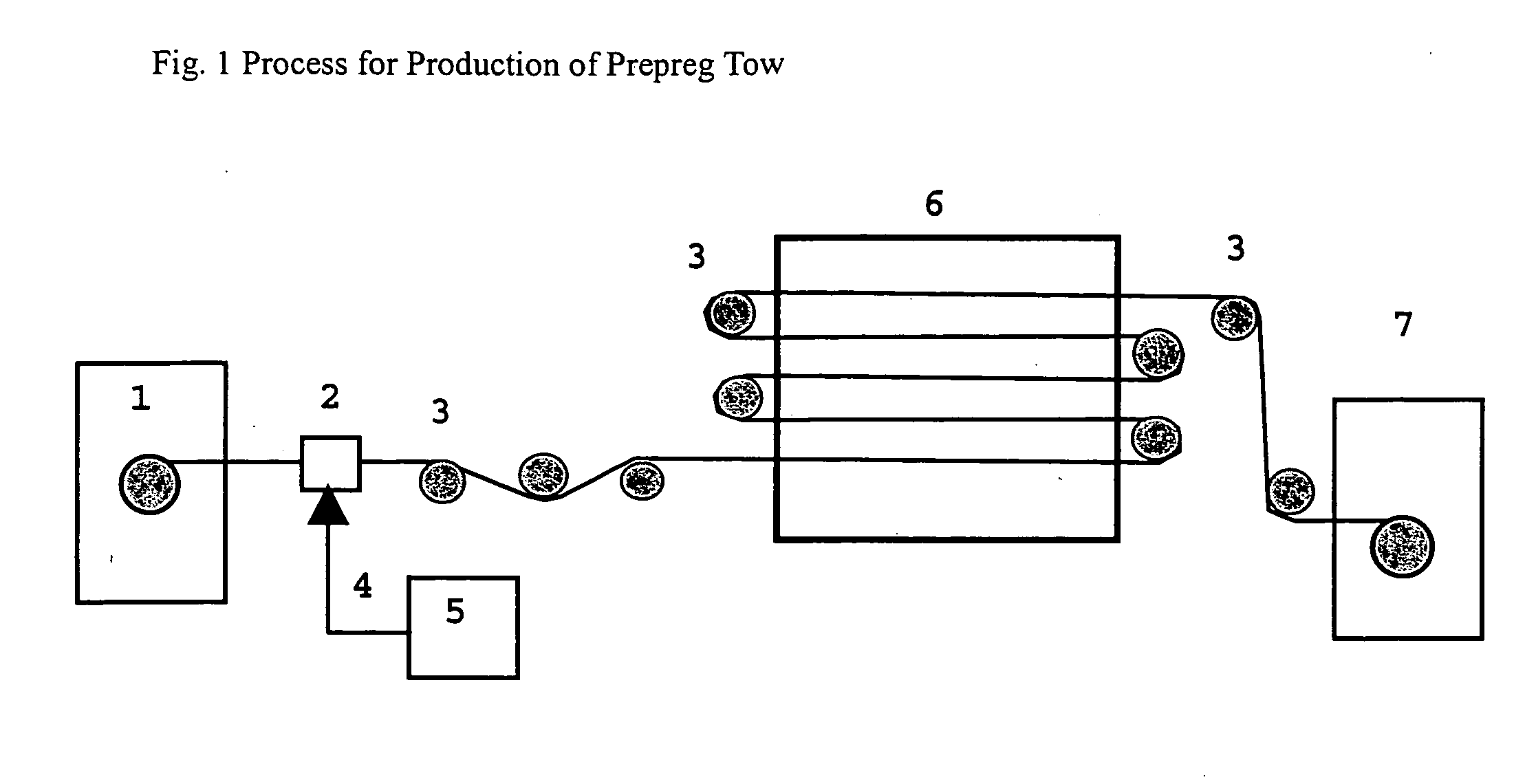Composite pressure container or tubular body and composite intermediate
a pressure container and composite intermediate technology, applied in the field of composite intermediates, composite pressure containers, tubular bodies, etc., can solve the problems of long time to complete the winding, high operating costs, and difficulty in achieving the effect of fiber strength translation of hoop fibers
- Summary
- Abstract
- Description
- Claims
- Application Information
AI Technical Summary
Benefits of technology
Problems solved by technology
Method used
Image
Examples
example 1
[0109] One mole of polyethylene glycol having a molecular weight of 7000 was reacted with one mole of diglycidyl ether bisphenol-A which was 188 g per epoxy equivalent to form a copolymer having a weight average molecular weight of approximately 8,000. One kilogram of this copolymer was mixed with 11 kg of an epoxy mixture of EPON 828, EPON 1050 and EPON 1001F of Shell at a ratio of 45 / 45 / 10, to form a resin mixture. This resin mixture was uniformly mixed with 880 g of dicyandiamide and 440 g of 3-(3,4-dichlorophenyl)-1,1-dimethylurea. The average particle diameter of dicyandiamide and 3-(3,4-dichlorophenyl)-1,1-dimethylurea was 10 μm, to form a resulting resin mixture.
[0110] The resulting resin mixture was heated at 70° C., and poured into the same amount of deionized water held at 70° C., to form a solution. The solution was stirred at 1,500 rpm. The temperature was then decreased to 35° C. to form an emulsion. The amount of the copolymer added was approximately 8%.
example 2
[0111] A prepreg tow was produced using a prepreg tow production apparatus shown in FIG. 1 using the emulsion formed in Example 1. The emulsion was charged in a resin tank 5, maintained at 35° C., and always stirred with a stirrer. The resin emulsion was fed to a resin impregnation device through a resin feed pipe 4 with a metering pump.
[0112] A spool of 12,000 filaments of carbon fiber TR50S manufactured by Mitsubishi Rayon Company Ltd. was installed in a creel. A carbon fiber tow was fed to the resin impregnation device and brought into contact with the resin fed from the resin tank. Subsequently, the fiber was impregnated with the resin through a resin impregnation roll, and water was then dried with an oven 6. The tow was wound with a winder 7. The production rate was 15 m / min, and the resin content was 30% by weight.
example 3
[0113] The prepreg tows produced in Example 2 were used, and they were arranged unidirectionally to form a unidirectional prepreg. Twelve plies of the prepreg were laminated, and cured in an autoclave at 275° F. for 2 hours to form a unidirectional laminate.
[0114] From the unidirectional laminate, test pieces for an interlaminar shear strength (SBS) and a 90° tensile strength (FS90) were prepared, and SBS and FS90 were measured according to ASTM D2344 and ASTM D790 (both incorporated herein by reference).
[0115] SBS and FS90 at 75° F. were 15 Ksi and 16 Ksi respectively.
PUM
| Property | Measurement | Unit |
|---|---|---|
| temperatures | aaaaa | aaaaa |
| particle diameter | aaaaa | aaaaa |
| particle diameter | aaaaa | aaaaa |
Abstract
Description
Claims
Application Information
 Login to View More
Login to View More - R&D
- Intellectual Property
- Life Sciences
- Materials
- Tech Scout
- Unparalleled Data Quality
- Higher Quality Content
- 60% Fewer Hallucinations
Browse by: Latest US Patents, China's latest patents, Technical Efficacy Thesaurus, Application Domain, Technology Topic, Popular Technical Reports.
© 2025 PatSnap. All rights reserved.Legal|Privacy policy|Modern Slavery Act Transparency Statement|Sitemap|About US| Contact US: help@patsnap.com


